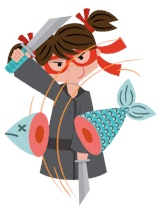Power to the People – Mastering Human-Centered Design
Chad Mazzola
Lesson 25
The importance of user-centered design is well-established. This blunt statement from Dieter Rams says it all: "In my eyes, indifference towards people and the lives they lead is the only sin a designer can commit." But it's a significant challenge to translate high-level, human-centered concerns into the actual clicks and taps of a software product. We may have good intentions, but the real test is how our users feel when using the product.
The goal of the lesson is to help you connect high-level goals to specific design approaches in order to build products that are well-designed at every layer.
-
Building the Minimum Badass User
In this brilliant presentation, Kathy Sierra argues that what companies need to really focus on is making their users awesome, not building products that are merely perceived as awesome. Watch the presentation and think about a project you are working on. In what way can you make your users awesome? How can you re-align your priorities to make sure you accomplish this?
-
UI and Capability
Revisit this blog post from Ryan Singer that we first saw in Lesson 16. Building on the presentation from Kathy, think about the specific capabilities in your product that enable user awesome. Are you expressing them as clearly as you could? Take a feature and sketch our new ideas for expressing it in a way that gives your users a better, clearer way to achieve their goals.
-
Making Considerate Software
Now that you're getting a better feel for what matters to your users and how to express it clearly, think more deeply about the personality of your product. Read through this list of personality traits expressed in software, and compare them to the tone of your product. Are you treating your users in a way that reinforces or hinders their goals?
-
When We Build
Watch this talk by Wilson Miner and take the time to step back and consider not just your product and its users, but the context they exist within. If you are truly making your users awesome, giving them new capabilities and power, what are the bigger consequences of this? How does your tool shape the people who use it and the world at large?
-
How visionaries see the future
When thinking through solutions to problems you're working on, it's easy to rely on existing ideas for direction. Read this article and think about how you could fundamentally change the way you frame a problem you are engaged with. Could you make a dramatic leap that changes the nature of the problem? Think big!


